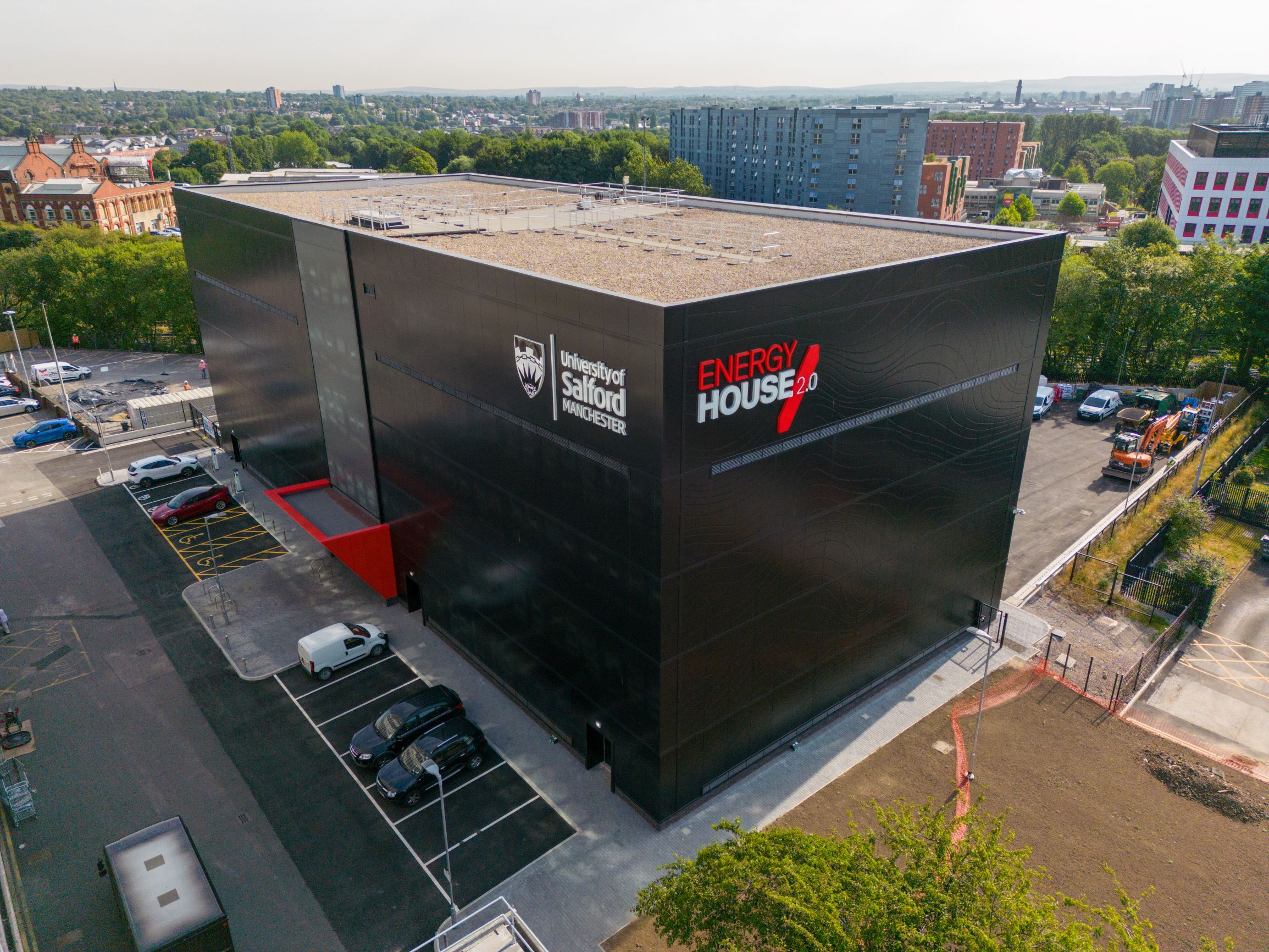As world leaders met at COP27, Saint-Gobain has announced a pioneering partnership with Barratt Developments and Salford University to create a futuristic test house that will play a key role in accelerating progress towards low carbon and net zero housing.
eHome2 is a three-bedroom family home built inside the world-leading Energy House 2.0 facility at Salford University. Over a period of nine months, the house will undergo rigorous whole-building testing including thermal performance, energy efficiency, running costs and comfort as well as its ability to cope with extreme temperatures and climatic conditions.
The £16m testing facility, which was completed in February this year, is the largest of its kind in the world, with two chambers which can accommodate two detached homes. The chambers can replicate weather conditions including rain, wind, snow and solar radiation, with temperatures ranging from -20 degrees to +40 degrees centigrade.
The data gathered from eHome2 will help inform how the housebuilding sector will design and build properties to meet the 2025 Future Homes and Building Standard, and deliver low and zero carbon housing at scale, through the use of sustainable building materials and off-site solutions.
ehome2 is operationally net zero carbon and features a range of sustainable building products from Saint-Gobain brands including British Gypsum, Isover, Saint-Gobain Glass and Weber. The house was built using modern methods of construction by Scotframe and Pasquill, with an advanced timber frame solution and factory-installed pre-insulated walls.
The innovative home features an air source heat pump, Mechanical Ventilation and Heat Recovery (MVHR) and Centralised Mechanical Ventilation systems, PV panels and battery storage, heated skirting boards and infra-red panel heating. With a variety of heating, hot water and air handling systems within the property, a key part of the research will be to establish how different combinations, paired with the high performing fabric of the home, can best deliver low running costs, through low carbon heating as well as homeowner comfort.
Mike Chaldecott, CEO of Saint-Gobain UK & Ireland, said: “We are delighted to be partnering with Barratt on this ground-breaking project. Climate change, water shortages and resource scarcity are some of the most critical challenges of our time and construction must transform to meet these challenges.
“Creating eHome2 will produce a new blueprint for building homes en masse that are capable of operating at net zero carbon level, consuming far less water and creating less waste. At times like this, with the cost of energy at a critical point, new modern methods of construction which see homes constructed off-site in controlled factory settings are essential to create sustainable, comfortable and efficient homes that will cost consumers far less to heat.”
Oliver Novakovic, Technical and Innovation Director at Barratt, said: “As the leading national sustainable housebuilder, we’re building high-quality sustainable homes today, as well as innovating and adapting our designs for the future.
“Building eHome2 within the Energy House is one of the most significant projects that Barratt has ever undertaken. Along with Saint-Gobain and the University of Salford, we’re leading the way to test the impact that extreme temperatures caused by climate change could have.”
Energy House 2.0 is part-funded by the European Regional Development Fund and harnesses the University of Salford’s expertise in climate and the built environment.
Professor Will Swan, Director of Energy House Labs at the University of Salford, said: “The growing challenges of climate change and the cost-of-living crisis mean we need to consider how we build and operate our homes. Energy House Labs’ mission is to work with industry and policy makers to provide evidence for what works in meeting these challenges.
“Energy efficient, high performing homes can change people’s lives. The importance of this agenda is one of the main reasons behind the University of Salford’s major investment in Energy House 2.0, which is a critical piece of research infrastructure that can help us find solutions to these problems.”
The built environment accounts for 40% of the UK’s carbon footprint. The Future Homes and Building Standard will require CO2 emissions produced by new homes to be 75-80% lower than those built to current standards. Homes will also need to be ‘zero carbon ready’, with no retrofit work required to benefit from the decarbonisation of the electricity grid and the electrification of heating.
